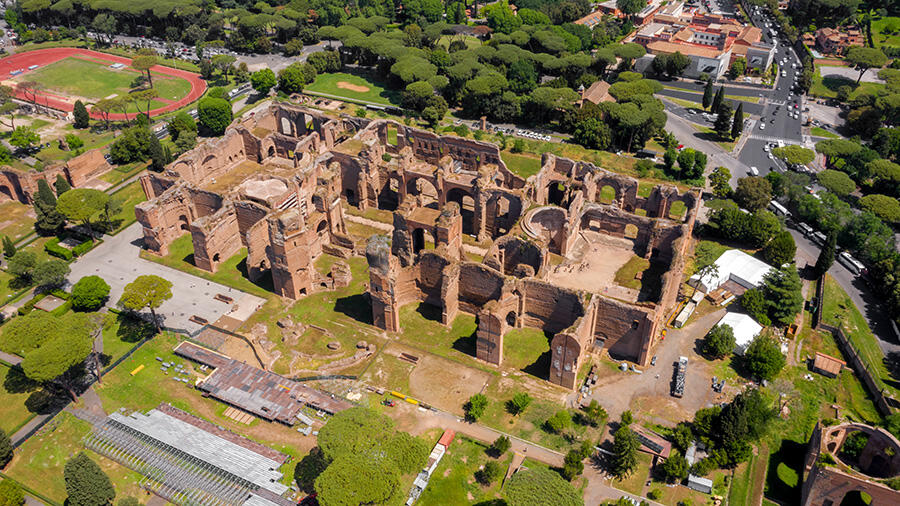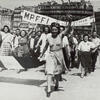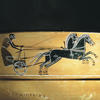You are here
Who was Caracalla, the cruel emperor of Gladiator II?

Almost a quarter century after Gladiator, director Ridley Scott is returning to Roman Antiquity with the sequel to his famous epic. In what historical context did the events of Gladiator 2 unfold? Who was Caracalla, the emperor opposing the hero Lucius?
François Chausson:1 While Gladiator took place at the end of the Antonine period, under the reign of the Emperor Commodus (181-192 CE), Gladiator 2 is set under another dynasty, the Severan (193-235 CE). Septimus Severus, the founder of the dynasty that bears his name, took power after four years of civil war that culminated with the assassination of Commodus.
His eldest son was born circa 186-188 CE in Lugdunum (modern-day Lyon), where Septimus Severus was the legate for Lugdunensis, the Roman province of Lyon. The young Marcus Aurelius Antoninus took the names of Antoninus and Marcus Aurelius, two emperors from the preceding dynasty, which his father invoked to legitimise his new power. The future Caracalla had African roots on the side of his father, who was born in Lepcis Magna, in modern-day Libya; on the side of his mother, Julia Domna, he descended from a line of Syrian princes of Greek culture, dynasts of the city-state of Emesa, modern-day Homs.
His father involved him in power from childhood, conferring the title of Caesar upon him at the age of 8 or 10, and that of Augustus at 11. Rising to power in 211 after his father’s death in York, the young man reigned until his assassination on 8 April 217 near Edessa in the empire’s east at the hands of his praetorian prefect, the Roman lawyer and knight Macrinus. He got his nickname from caracallus, a coat he distributed to the people–in modern parlance it would be like calling him Parka, Anorak, or Puffer Jacket.
Like Commodus in the first film, Caracalla is depicted as a tyrannical and crazy emperor. Where does this dark legend come from? What view do historians have of this figure today?
F. C. : His legend is less dark than other emperors such as Caligula, Domitian, and Commodus, or Elagabalus a few years after Caracalla. It primarily grew out of the work of Cassius Dio, a Greek senator who was a contemporary of Caracalla, and the author of a Roman History, in which he relates his conversations with the emperor that he did not particularly like. Dio notably faulted him for wasting his good education and frequenting his soldiers instead. Dio did not nickname him Caracalla–which came around 400 in the Historia Augusta–but Tarautas, after a gladiator that was Caracalla’s spitting image.
The murder of his younger brother Geta, depicted by Dio as possessing all of the virtues and being gentle like their father, especially tarnished Caracalla’s reputation. However, Dio was quite pernicious, because he based himself exclusively on literary sources, which gladly classified emperors as good or evil.
Current research has emphasised his administrative and military efforts, with a few notable successes on the borders of the Danube and the Euphrates, along which he spent most of his short reign. Caracalla strikes us today as a depressed and ill emperor. He was very pious, travelling from sanctuary to sanctuary–that of Apollo Grannus in Gaul and Asklepieion of Pergamon–in search of a cure for an unknown illness. Similarly, his coinage and iconography have been analysed as tokens bearing the ideology of his reign.
His legend was probably not so dark for his contemporaries, as his Syrian successors orchestrated the restoration of Severus against Macrinus by laying claim to his memory. His two first cousins on his mother’s side–Julia Soaemias and Julia Mamaea–said that they respectively bore him the Emperors Marcus Aurelius Antoninus (Elagabalus) and Marcus Aurelius Alexander Severus (Severus Alexander), the successors of his assassin.
Let us discuss Geta’s murder. How to explain this fratricide?
F. C. : It was a scene in the grand manner, worthy of an ancient tragedy. After their father’s death, the two brothers cohabited for a year before Caracalla personally eliminated Geta in his mother’s arms, who was stained with her son’s blood and wounded in the hand by a Gladius sword. Caracalla kept the murder weapon at least until 216, when he dedicated it to the god Serapis during a trip to Alexandria four years after the event.
Caracalla always justified himself by claiming that his brother had plotted against him. Why not believe him? The fact that Geta was killed in this struggle to the death is no token of innocence. The inferiority, dictated by protocol, from which the younger brother suffered could have fuelled bitterness for years. The two brothers had not received the same favourable treatment from their father, as Caracalla was given the title Augustus at the age of eleven, and Geta only at the age of twenty, in January 209.

Geta’s elimination continued with purges targeting senate members from the African branch of the dynasty and one of Marcus Aurelius’s daughters, as well as by the condemnation of his memory, a damnatio memoriae unparalleled in Roman history: inscriptions mentioning Geta were hammered, his name was struck off coins and papyri, statues in his likeness were destroyed, etc. Despite these measures, for the rest of his reign Caracalla always complained that his brother came back to him during his nightmares. This was his Macbeth side, with the sources depicting him as a worried and tormented figure.
Aside from his dark legend, Caracalla is also known for the edict bearing his name. In 212, the emperor made every free man a Roman citizen. What did this edict change with respect to the preceding situation? And how to explain this act by a man accused of being a tyrant?
F. C. : For a long time, since the first century BCE, the Roman Empire worked to spread Roman citizenship in the west and among elites. However, in the early third century, the peregrini, which is to say citizens enjoying the rights of their city-state but not Roman citizenship, still made up the majority of the empire. Caracalla’s edict had a stupendous impact by facilitating, for millions of men, action in the army, trade, marriages, and integration within the upper orders of society. The social and political effects are reflected in the number of new citizens who, from 212 CE onwards, took the name “Marcus Aurelius” after the emperor.
Caracalla had multiple motivations. Being pious as he was, he asserted that he wanted to thank the gods of the Roman state, who saved him and granted him victory, by creating new Roman citizens in their honour. The snide Dio mocked a fiscal motive aiming to raise tax revenues on the inheritances received by Roman citizens, whose amount the emperor had just doubled, with the funds earmarked for the military treasury. Whatever the motivations, Caracalla’s edict–a revolutionary measure within a multi-century process–helped to normalise provincial civic communities.
Caracalla’s legacy also includes the baths that still bear his name today, among the most important archaeological remains of ancient Rome. Could you present them to us? Who were they intended for?
F. C. : The Baths of Caracalla and the Baths of Antoninus are among the large baths built around a central gallery, which developed based on those of Nero on the Campus Martius, and include the baths of Titus, Trajan, Severus Alexander, and later Diocletian and Constantine. The Baths of Caracalla were located where the Appian Way opens onto the city limits, not far from the Palatine Hill.
The Historia Augusta relates that the vaults included metal framework, and metal beams were indeed found during the Renaissance, confirming the existence of reinforced concrete. The decoration was opulent, as demonstrated by the basins and other statuary from there. Like all large public baths, they were intended for the Roman plebs, who went there at night.
As a historian of Roman antiquity, what view do you take of an epic such as Gladiator II?
F. C. : The specialist should take a calm and even kindly view of major Hollywood productions. The goal is not to be on the lookout for discrepancies. On the contrary, it is a good thing that Hollywood is interested in antiquity. In this respect Gladiator revived the epic film genre, which had been at a standstill since the 1950s and the golden age of Cinecittà. Very good historical films followed the first instalment, such as Alexander (Oliver Stone, 2004) and Agora (Alejandro Amenábar, 2009).
One could nevertheless say that Gladiator lacked imagination. A remake of The Fall of the Roman Empire (Anthony Mann, 1964)–which was a commercial and financial failure despite a star-studded cast (Sophia Loren, Alec Guinness, James Mason, Omar Sharif, Christopher Plummer, etc.)–Ridley Scott’s blockbuster included huge errors regarding gladiatorship as well as clichés regarding Rome, dominated by violence, blood, and sex. One could even say that Gladiator is an excellent comedy!
More generally, the two Gladiator movies approach Roman Antiquity through the lens of decline, the fall of the Roman Empire, a concept dating back to the eighteenth century and The History of the Decline and Fall of the Roman Empire, by the British historian Edward Gibbon. However, this notion of decline should be challenged, for the Roman Empire did not fall, but evolved throughout Late Antiquity, with the dislocation of its Western territories coming in the fifth century. It would be a good thing for Hollywood to get rid of these outdated clichés.
- 1. Professor Emeritus of the History of the Roman Empire at l’Université Paris 1 Panthéon-Sorbonne, member of l’UMR 8210 Anthropology and History of Ancient Societies (CNRS / EHESS / EPHE-PSL / Université Paris 1 Panthéon-Sorbonne / Université Paris Cité), and Vice President of Culture and Outreach for Science and Society at l’Université Paris 1 Panthéon-Sorbonne.



















